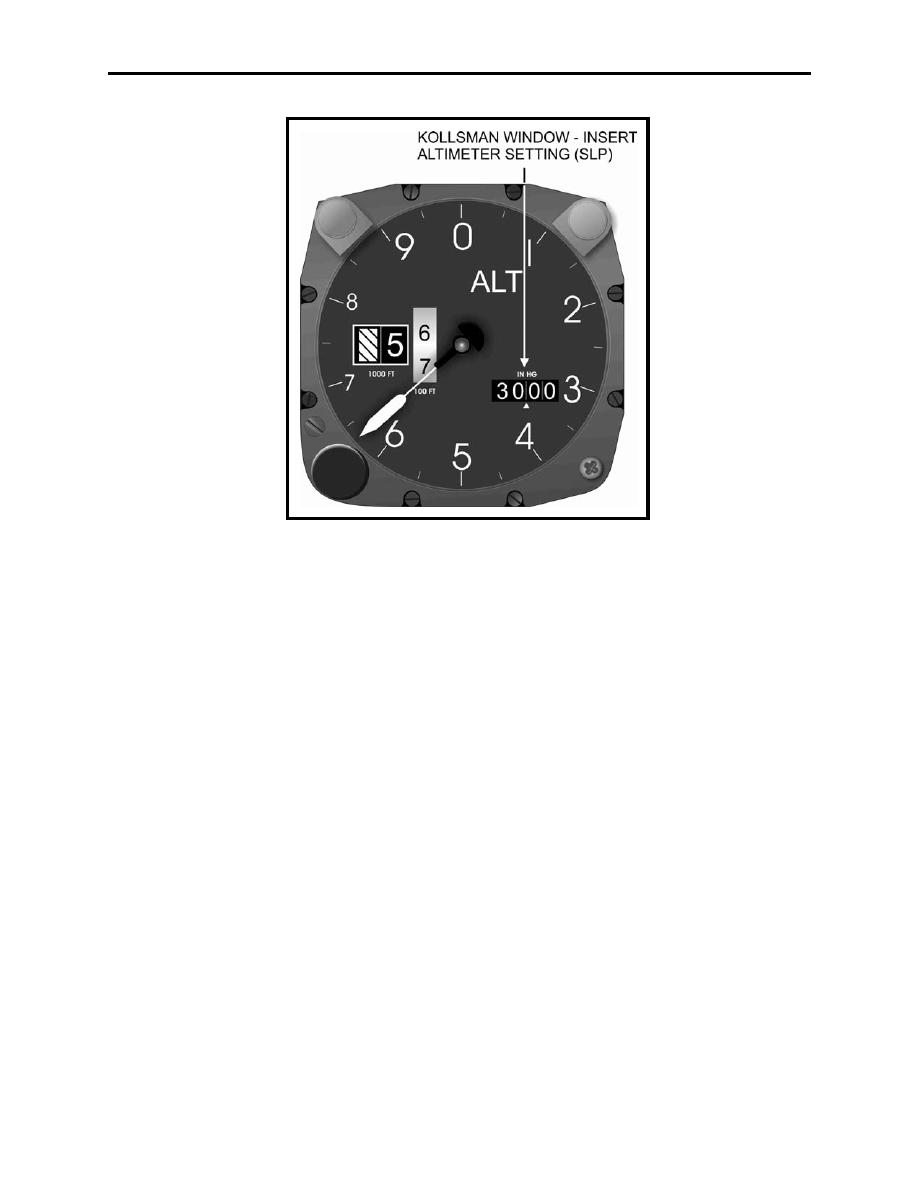 |
|||
|
|
|||
|
|
|||
| ||||||||||
|
|  AVIATION WEATHER
CHAPTER ONE
Figure 1-7 Barometric Altimeter (aka Pressure Altimeter)
112.
ALTITUDE MEASUREMENT
Altitude is defined as the height above a given reference. The instrument displaying altitude in the
cockpit is called an altimeter. The barometric altimeter is an aneroid barometer calibrated to display
altitude in feet, as opposed to pressure in inches of mercury (Figure 1-7). Since an altitude includes
not only the height number, but also the reference, altimeters have a Kollsman window that shows
the reference pressure, known as the altimeter setting. The altimeter setting is the value to which the
scale of the pressure altimeter is set so the altimeter indicates true altitude at field elevation. It is
very nearly equal to the station pressure corrected to MSL pressure (not exact, but close enough for
instructional purposes). An adjustment knob allows the altimeter setting to be changed. If the local
altimeter setting is dialed in to the Kollsman window, the altimeter will indicate the altitude in feet
above MSL. If 29.92 is set, the altimeter will indicate the altitude above the standard datum plane.
MSL and pressure altitudes are the two altitudes most often displayed on the altimeter and are
discussed in the next section.
Altitudes
Indicated altitude is the altitude read directly from the altimeter. Since altimeters need no power
(except for lighting, they operate by measuring the outside pressure), they will always indicate
some value. Figure 1-7 shows an indicated altitude of 5635 feet. For an indicated altitude to be
useful, however, the altimeter needs to have the correct reference for the situation by dialing
either the local altimeter setting or 29.92 in to the Kollsman window. This way, the indicated
altitude will be equal to either the MSL or pressure altitude (still to be discussed).
General Structure of the Atmosphere, and Atmospheric Temperature and Pressure 1-9
|
|
Privacy Statement - Press Release - Copyright Information. - Contact Us |